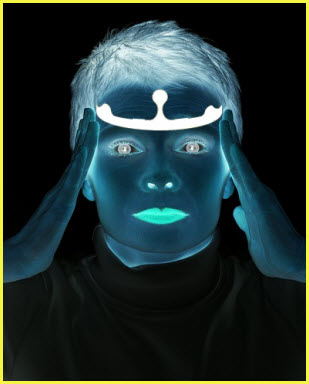Transcutaneous Nerve Stimulation Offers Hope For Sufferers
The March 2014 FDA approval of a migraine headband device known as Cefaly offers hope to people who may have problems with many of the drugs currently being marketed for sufferers.
 Until now, leading treatments included implantable neurostimulators, biofeedback, and medication. Some common Triptan treatments include brand names like Imitrex, Zomig, and Frovan. The danger of any medication is that in an ironic twist they may cause overuse headaches if they are accessed frequently. Because pharmaceuticals affect different people in different ways, there is a class of sufferers that may not react well to pills.
Until now, leading treatments included implantable neurostimulators, biofeedback, and medication. Some common Triptan treatments include brand names like Imitrex, Zomig, and Frovan. The danger of any medication is that in an ironic twist they may cause overuse headaches if they are accessed frequently. Because pharmaceuticals affect different people in different ways, there is a class of sufferers that may not react well to pills.
Prevention for Recurring Headaches
Triggers for migraine headaches can be everywhere and vary by the sufferer. Some people can be triggered by coffee, smoke, chocolate, or other environmental factors. Others may experience migraines as a response to stress, changing hormonal balances, or even for no apparent reason at all. One thing that migraine sufferers can agree on is that the pain and effects can be debilitating, and make them unable to work or perform normal tasks. People may see flashes of light, auras, or other visual effects that make concentration difficult. As many as ten percent of people may experience migraine headaches, but those with multiple occurences per month can become effectively disabled by them.
The symptoms of migraines include nausea, sound and light sensitivity, vomiting, and adverse reactions to smells. People may experience pain and effects for as long as 3 days or as little as a few hours. For those who see auras (sometimes even without associated pain) the symptoms can often mock that of a stroke. While the Cefaly device may seem unusual to people who do not experience this condition, it could be seen as a lifeline to those who are sidelined with auras and head pain several times a month.
How The Headband Works
According to online literature (pause for a quick flash of skepticism) the device uses transcutaneous electrical nerve stimulation, which basically means that it is passing an electrical charge through the skin. The placement of the electrode in the middle of the forehead, over the eyes, may make it look like a tiara, but this area is the home of the trigeminal nerve, most often associated with migraines. Some other treatments target this nerve with implants or surgery, so the headband may be a noninvasive way to try getting treatment. Because an electrical field is stimulating nerves, the user may report tingling or massaging sensations.
When using the headband, wearers should be sure that the portion that contacts the skin is relatively dry and free of creams or makeup that may impede the electrical signal or corrode the contact point. For example, wearing an avocado or mud mask, or heavy makeup, might lessen the effect, whereas excessive skin salinity (sweating) may create more conduction.
It is still important to note that the Cefaly device did not reduce the intensity of headaches, and could not completelhy prevent them. However, as a supplement to other treatments it may reduce the need to take as much medication, which can be expensive and have side effects of its own.